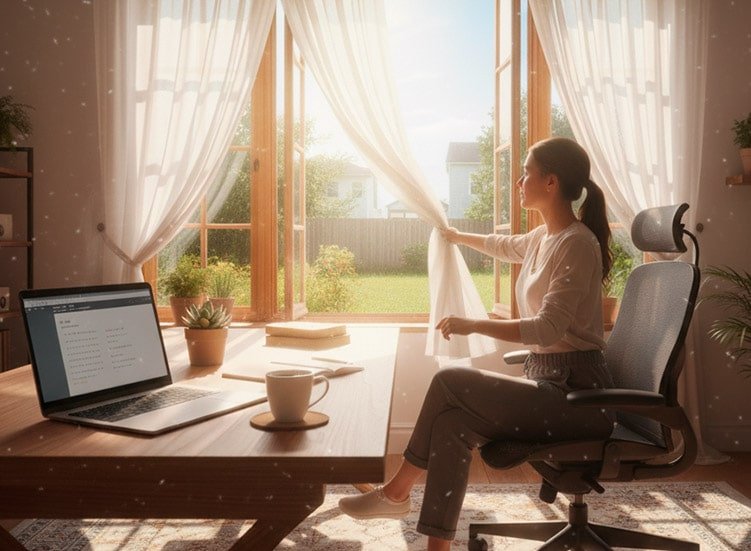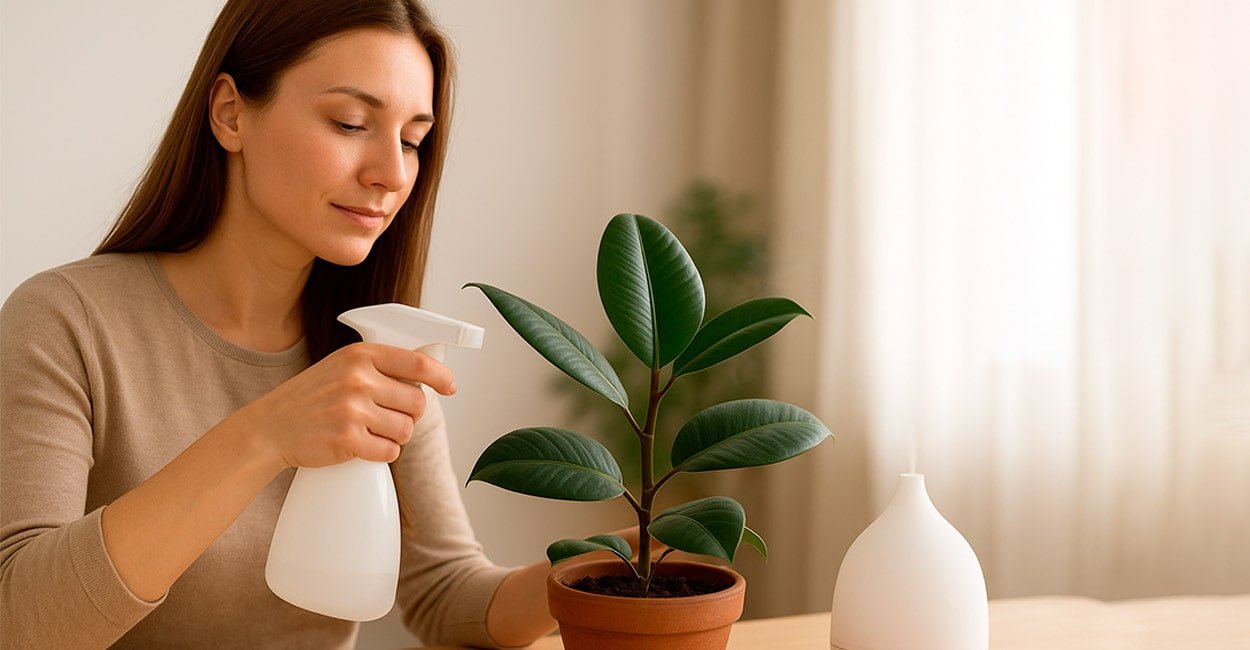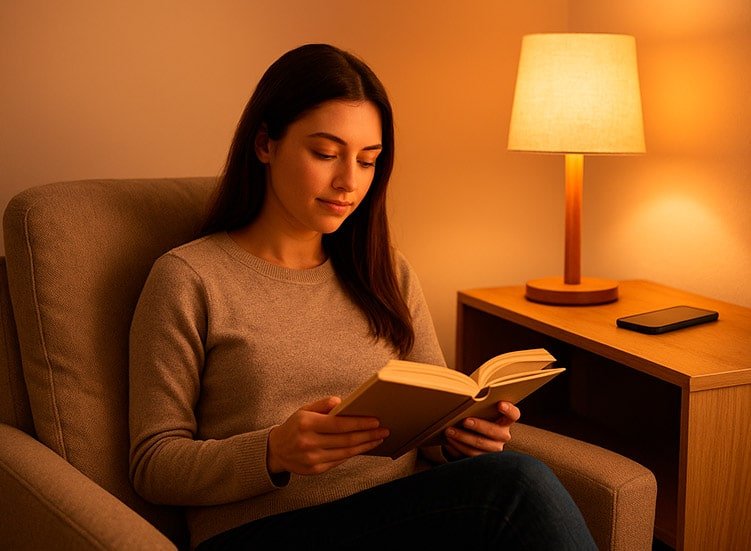Why natural light for wellness matters more than you think
Light is much more than mere illumination: it is a silent language of the environment that communicates comfort, safety, energy, and focus. When we think of natural light for wellness, we are not just talking about getting sunshine; we are talking about how light (natural or well-designed artificial) shapes routines, regulates spatial perception, and influences your daily productivity and mood.
This guide is a practical and in-depth manual for transforming any room, a bedroom, living room, kitchen, office, or co-working space, into an environment that fosters concentration, creativity, and emotional balance.
Here, we address concepts, practical metrics, design techniques, low-cost and high-cost solutions, and suggestions for good products.
There is no medical advice here, only environmental design, applied psychology, and concrete actions you can execute right now.
Executive summary on natural light for wellness (for readers who want to act now)
- Identify the quality of light in your current environment (quantity, direction, shadow).
- Prioritize layered lighting: general (ambient), task, and accent/decorative.
- Use color temperature (Kelvin) and intensity (lux) to adapt environments: workspaces require brighter, neutral lights; rest calls for warm, softer tones.
- Maximize natural light entry with simple solutions: mirrors, sheer curtains, cleaning, furniture rearrangement.
- Invest in lamps that mimic natural light (full-spectrum / daylight) when sunlight is unavailable.
- Automate with smart bulbs and schedules to support daily rhythms.
- Small aesthetic adjustments (plants, light textures) amplify the effects of light.
- Practical tools: smartphone light meter apps, smart bulbs, light diffusers, sheer curtains, adjustable blinds/shades.
1- Core concepts of natural light for wellness (simple, but essential)
What is Natural Light?
In our context, natural light refers to the light provided by the sun and how it enters a space (direction, intensity, color throughout the day).
However, when the sun is not available (dark morning, cloudy days, windowless indoor environments), we speak of simulated natural light: artificial lighting solutions that seek to reproduce the qualities of sunlight to promote well-being.
Three Qualities that Matter
- Intensity (Brightness) — measured in lux (the more lux, the more “illuminated” and stimulating the environment).
- Color Temperature (Kelvin, K) — “warm” light (~2700–3000K) is cozy; “neutral” light (~3500–4000K) is versatile; “cool” light (~5000–6500K) is stimulating and close to daylight.
- Color Rendering Index (CRI) — how faithfully colors appear and can be identified; a high CRI (≥90) is important for visual tasks and aesthetics.
Lighting and Behavioral Rhythms
The natural variation of light throughout the day (sunrise → neutral/bluish light → golden late afternoon) signals the body and mind when to be active and when to slow down.
Recreating this pattern indoors or in the office helps organize the day without expending extra mental energy.
2 – How to assess your space for natural light quality for wellness: practical steps
- Observe all day: note when natural light enters, from what direction (N, S, East, West), areas that receive direct sunlight, and shaded areas.
- Map usage: define what activity happens in each area (intense work, reading, eating, rest).
- Quick measurement (optional): smartphone light meter apps provide a practical sense (e.g., comfortable reading ≈ 300–500 lux; office ≈ 400–800 lux; ambient light in living room ≈ 100–300 lux). Use this only as a practical reference.
- Color quality: notice if the environment’s colors appear “dull” — this may indicate a low CRI from your bulbs.
- Recurring problems: direct glare on the screen, uncomfortable reflections, dark corners, direct light that causes fatigue or harsh shadows.
3 – Layered lighting design for natural light wellness (the central technique)
Well-executed lighting has at least three layers:
3.1 General Lighting (Ambient)
Provides a uniform base. This is usually ceiling lights, pendants, flush mounts, or LED panels. It should be adjustable (dimmer) to modify intensity according to the time of day.
3.2 Task Lighting
Directed towards specific activities: desk lamp, pendant over a counter, reading lamp. It should provide adequate light for the task without creating shadows.
3.3 Accent / Decorative Lighting
Creates atmosphere: LED strips behind furniture, directional spotlights, floor lamps with dimmers, lighting for artwork and plants. Essential for the space’s emotional well-being.
4 – Color temperature: how to use It without mistakes
-
Working / Studying: 4000K–5000K (neutral to cool), more stimulating.
-
Kitchen / Manual Tasks: 3500K–4500K for good color reproduction.
-
Living Room / Social Area: 2700K–3000K for warmth and relaxation.
-
Bedroom: 2700K or less to reduce stimulation before sleep.
Practical tip: choose bulbs with adjustable temperature (tunable white) so you can switch according to the activity.
5 – The role of natural light for wellness (sunlight intake) and how to maximize it
Beyond medical issues related to sun exposure, consciously utilizing sunlight improves the sense of spaciousness, emotional warmth, and perception of time. Here are practical tactics:
- Keep windows clean — dust reduces light transmission.
- Reflective objects and mirrors — strategically positioned, they reflect light into dark corners.
- Light colors on surfaces and ceilings — increase the sense of brightness.
- Low furniture near windows — allow light to spread.
- Layered sheer curtains + blackout shades — control: sheer for diffusion; blackout to block when necessary.
- Outdoor landscaping — strategic pruning of plants that excessively block light.
6 – Solutions when sunlight is insufficient for natural light wellness
Not every space has good solar intake, but efficient solutions exist.
6.1 Full-Spectrum / Daylight Bulbs
Bulbs that better reproduce the sun’s tonality (high CRI). Use in workspaces and kitchens.
6.2 Fixtures with Kelvin Adjustment (Tunable White)
Allow switching between warm and cool tones according to use and time of day.
6.3 Dimmable LED Panels
Offer uniform, soft lighting; choose CRI ≥ 90 for more natural colors.
6.4 Smart Bulbs
Allow programming scenes (morning, work, relax) and integration into routines with assistants (Alexa, Google).
6.5 Light Diffusers and Bulbs with Opalescent Diffusers
Eliminate harsh shadows and create more comfortable light for socializing/living.
7 – Advanced design and architecture tips without complex renovations, that intensify the use of natural light for wellness
- Light Zones: transform areas of the environment for distinct uses (e.g., more brightly lit reading corner; sofa with soft light).
- Subtle Contrast: avoid “all too bright” environments that cause fatigue. Mix brighter points with areas of soft shadow.
- Vertical Lighting: light up walls with sconces to amplify the sense of height and depth.
- Indirect Lighting: reflects off the ceiling or walls for more pleasant, less glaring illumination.
- Material Integration: metals and glass consume/reflect light differently — choose textures that favor the desired effect.
8 – How to use natural light for daily rituals and productivity that increase wellness
- Mornings (waking and energizing): neutral/cool, more intense light in areas of morning activities. Program scenes in smart bulbs to simulate a sunrise.
- Focused Work: neutral white light on the desk; reduce ambient light to avoid screen glare.
- Breaks and Micro-Rests: decrease intensity, switch to a warm bulb in a “break” scene to signal the brain it’s time for decompression.
- End of Day and Mental Shutdown: create a routine with warm, low-intensity light 60–90 minutes before bed to reduce stimulation.
Practical Example (Home Office)
- Scene 1: “Start Day” — 500–700 lux in the work area, 4500K.
- Scene 2: “Focus” — task spot 600 lux, CRI≥90, directional light with no screen glare.
- Scene 3: “Break” — ambient light 200 lux, 3000K, low music.
- Scene 4: “Shutdown” — ambient light 150 lux, 2700K, turn off dedicated workspace lights.
9 – Products that aid the smart use of natural light for wellness
1- Smart Bulbs (Tunable White, LED) Click here to see
Benefit: Temperature adjustment, pre-programmed scenes, integration with assistants.
Recommended Spec: “9W Tunable White Smart Bulbs (with CRI ≥ 90) – ideal for home offices.”
2 – Dimmable LED Panel Lights Click here to see
Benefit: Uniform general illumination, energy saving.
3 – Articulating Desk Lamps with Dimming Control Click here to see
Benefit: Precise task lighting without glare.
4 – RGB + Warm/Cool White LED Strips Click here to see
Usage: Decorative use and creating layers of light.
5 – Double-Layer Sheer and Blackout Curtains/Shades Click here to see
Benefit: Control natural light intake and privacy.
6 – Decorative Mirrors for Light Reflection Click here to see
Benefit: Light amplification without renovation.
7 – Brightness Sensors and Home Automation Click here to see
Benefit: Adjust light according to time of day and presence.
8 – Light Meters or Useful Apps Click here to see
Tool for measuring illumination levels before making changes.
9 – “Starter” Home Office Lighting Kits Click here to see
Combines smart bulb + desk lamp + LED strip.
10 – Quick implementation checklist (do in 1 day / 1 weekend / 1 month)
In 1 Day (Quick Changes)
- Clean windows and remove objects that block light.
- Move furniture to free up natural light pathways.
- Place a strategic mirror.
- Swap a bulb for one with a more appropriate temperature (e.g., change a very warm bulb to 3000K or 4000K).
In 1 Weekend (Small Investments)
- Buy a task light with Kelvin adjustment (tunable white).
- Install an LED strip behind a bookshelf or entertainment center.
- Replace curtains with a sheer + blackout double system.
In 1 Month (Full Project)
- Install smart bulbs and create automations (morning, work, break, evening).
- Map light scenes by room.
- Add plants and reflective elements.
- Measure lux in work zones and adjust intensities.
11 – Common mistakes related to natural light for wellness and how to avoid them
- Single, uniform light (no layers): result → space lacks personality, causes fatigue.
- Wrong temperature: light that is too cool during rest; light that is too warm for visual tasks.
- Glare and reflections: position task lights so they don’t shine directly on screens.
- Neglecting the CRI: cheap bulbs with low CRI make colors look “dead.”
- Automation without testing: default scenes without adjustment can make the environment uncomfortable; personalize.
 FAQ Frequently Asked Questions about the use of natural light for wellness
FAQ Frequently Asked Questions about the use of natural light for wellness
Natural light has unique qualities, but when it is not available, high-quality bulbs (high CRI and tunable temperature) can replicate aesthetic and functional benefits. The ideal is to combine the two.
Generally, 4000K–5000K (neutral to cool) is recommended for activities requiring visual attention; adjust based on personal comfort.
Use smartphone light meter apps as a reference: comfortable offices usually measure between 400–800 lux in the work area.
Yes, if you are looking for flexibility, routine automation, and the ability to adjust color/intensity for different times of the day.
Conclusion on the use of natural light for wellness
Light is one of the most powerful and underestimated tools for improving mood and productivity. With small changes relocating furniture, choosing the right bulb, creating automated scenes—you can transform the everyday experience without major renovations.
Did you like the guide? Try applying at least three actions from this list in the coming week and observe the changes in your focus and sense of well-being.
If you are looking for actions that can improve your productivity and daily life, we recommend reading other articles, such as:
1- Digital Detox, How to Gain Focus and Improve Quality of Life Without Quitting Technology
2- How to Take Short Breaks to Relax, Focus, and Improve Your Day
Click here for more content on Health & Wellness.







